
Official media of the Democratic People's Republic of Korea (DPRK) reported on 16 September 2021 that a newly established "railway-borne missile regiment" launched two ballistic missiles from a rail-mobile launcher on 15 September 2021. This is the first time the DPRK has revealed this ballistic missile basing mode, a mode known to have been adopted only by the Soviet Union/Russia. This latest development shows that the DPRK leadership is trying to improve the survivability of its nuclear arsenal, and in so doing advancing its preemptive and counter-strike capabilities. These launches also coincided with Republic of Korea (ROK) President Moon Jae-in's on-site attendance at the country's first full range test of a submarine launched ballistic missile (SLBM). Given that the DPRK launches preceded the ROK's SLBM test only by several hours, the ROK test was likely a pre-planned event and should not be seen as a tit-for-tat reaction to the DPRK launches. The efforts by the DPRK and the ROK to advance missile strike capabilities manifest the ongoing arms race on the Korean Peninsula. The risk of possible conflict escalation continues to be present, if not increasing.
Background: Rail-Basing Mode
During the Cold War, a number of modes for deploying strategic missiles, including the rail-basing mode, were studied by nuclear-weapon States with a view to increasing the survivability of their missile forces and ensuring a resilient strike capability as they pose a higher challenge to an adversary's reconnaissance capabilities. [1] Eventually, land-based silos, launch vehicles on trucks and nuclear-powered submarines have become the most common basing modes for strategic missiles.
In the 1950s, the US initiated a study on the feasibility of using the rail-basing mode for its Minuteman inter-continental ballistic missiles (ICBMs), but abandoned this option in 1961. [2] The idea was revisited in the 1980s, when the US planned to deploy Peacekeeper ICBMs on railway mobile launchers. However, this plan was cancelled after the Soviet Union collapsed. In 1975, China allegedly conducted experiments on rail-mobile launchers. [3] Only the Soviet Union successfully implemented the rail-basing mode in the 1980s, when its RT-23 [4] rail-mobile ICBM launchers were put into active service. [5] Funded by the Cooperative Threat Reduction program, all RT-23 missiles were completely eliminated in 2008. [6]
The reasons why rail-mobile launchers are not deployed by most nuclear-weapon States could include that: (1) launch vehicles on trucks, tracked chassis and strategic submarines offer better mobility, while the routes of rail-mobile launchers are fixed and more predictable; (2) a rail-mobile launcher, which normally consists of several train cars, is more visible than submarines and launch vehicles on trucks and tracked chassis; and (3) rail-mobile launchers were considered to be more expensive than fixed silos [7] whose survivability could be enhanced by decoy silos.
However, there could be a number of reasons for the DPRK to explore the rail-mobile launchers:
-
The DPRK has only put small, single-stage short-range ballistic missiles on the rail-mobile launcher. Such an approach is much less sophisticated and less expensive than a train carrying multiple ICBMs. Nevertheless, such a relatively simple rail-mobile launcher with short-range missiles could be considered as strategic weapons in the context of the Korean Peninsula.
-
A rail-mobile launcher for short-range ballistic missiles could be easier to disguise than railmobile launchers for ICBMs (Figure 1). This offers greater operational flexibility. For example, the launchers could be connected to cargo trains for better disguise.
-
The DPRK reportedly suffers from a lack of heavy duty trucks [8] and has not demonstrated the ability to produce heavy duty trucks of its own. Domestically produced tracked chassis could only partially fill this gap because the tracked chassis could not handle large missiles. Rail-mobile launchers could potentially become an important alternative to supplement the launch vehicles on trucks, especially to those carrying ballistic missiles too large for the tracked vehicles.
-
The DPRK's ability to produce indeginous ballistic submarines appears not to be at a very advanced stage. The DPRK has only built one small experimental ballistic submarine and is reportedly converting a 40-year-old Chinese submarine into a ballistic missile submarine. [9] The deficiencies in the shipbuilding industry would put a limit on the DPRK's sea-basing options in the near to medium term. Given these conditions, despite the disadvantage of the rail-mobile launchers in comparison to strategic submarines and other launch vehicles, the DPRK might still wish to explore this option. The deployment of short-range ballistic missiles on rail-mobile launchers could be the start of this exploration.

Figure 1. The DPRK rail-mobile launcher consisted of a locomotive, a supporting car and a missile launch car that accommodates two ballistic missiles. Image: KCTV
The 15 September Launch
The Missiles
From the photographs released by DPRK media, the missiles launched from the rail-mobile launcher appear to be KN-23 ballistic missiles (Figure 2), [10] eight of which were previously launched on four occasions in 2019. The 15 October 2021 launch would mark the ninth and tenth known launches of this missile without any apparent failure.
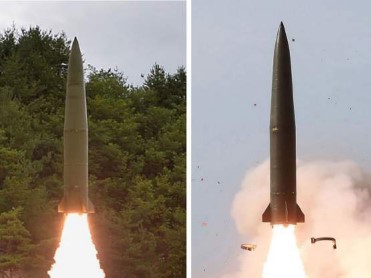
Figure 2. The missile launched from a rail-mobile launcher on 15 October (left) is identical to the DPRK’s ballistic missile with the US designation KN-23 (right). Images: KCNA
It is worth noting that the longest known previously exhibited range by the KN-23, a short-range, solid fuel ballistic missile, was 690 km in 2019. [11] According to the ROK Joint Chiefs of Staff, the 15 September 2021 launch was assessed as having flown 800 km (Figure 3), while the Japanese Ministry of Defence stated that the range was 750 km (Figure 4). An 800 km range would cover all of the Republic of Korea, as well as part of Japan, China and Russia. It is possible that theKN-23 was not tested to its maximum range in 2019, or that the missile has undergone modifications to allow for a longer range, such as through a reduced payload or improvements in the flight profile.
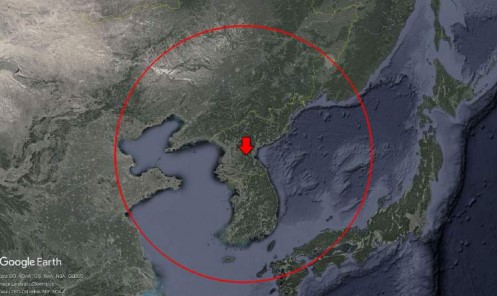
Figure 3. The stated range of 800 km could cover all of the Republic of Korea, as well as part of Japan, China and Russia. Image: Google Earth

Figure 4. Reported flight trajectories of the missiles launched on 15 September 2021
Location of the Launch
According to the ROK Joint Chiefs of Staff, the two ballistic missiles were launched from Yangdok County in South Pyongan Province. This assessment is confirmed by video footage released by KCTV on 16 September. This firing position is located approximately 15 km northeast of the Yangdok Train Station and is within the administrative jurisdiction of Yangdok County (Figure 5). [17]
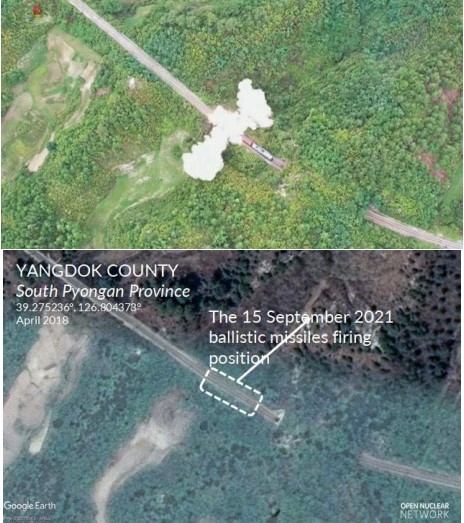
Figure 5. The ballistic missile firing position as shown in the video footage from KCTV (top); the corresponding location on Google Earth (bottom). Images: KCTV (top) and Google Earth (bottom)
In the past, several media outlets have reported on the existence of an "underground missile base" for medium-range ballistic missiles in Yangdok County, [19] a mountainous area that can be accessed via the Pyongra Line, a key railway line connecting Pyongyang and Rason (Figure 6). Multiple tunnel structures can be observed along the railway from the Yangdok Train Station northeastward. Satellite imagery suggests that there are approximately 35 tunnel structures along the line in Yangdok County, including eight large tunnel structures with lengths of over 300 meters on the railway section.
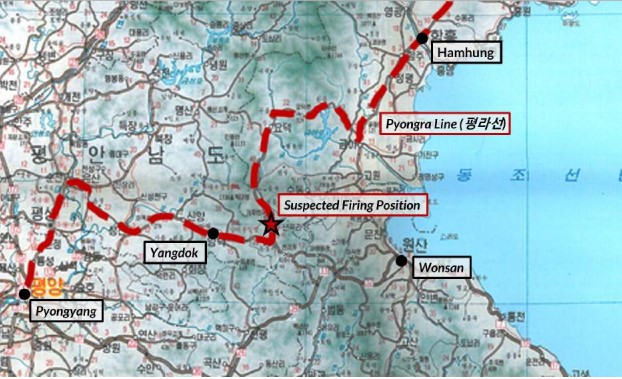
Figure 6. Excerpt from the DPRK's railway map highlighting the Pyongra Line connecting Pyongyang and Rason. Image: Daily NK, [18] annotated by ONN
Noteworthy, in particular, are two long tunnel structures of approximately 2.8 km and 1.3 km, the longest and the second longest, respectively, of the tunnels in and near Yangdok County (Figure 7). Given their significant length, these tunnel structures could be connected to underground facilities or spaces.
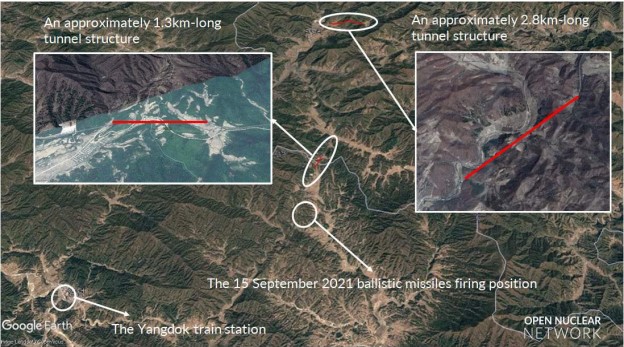
Figure 7. The long tunnel structures along the Pyongra Line that connect to the ballistic missile firing position. Image: Google Earth
Implications
DPRK State media have claimed that:
-
upon receiving the order, the newly established "railway-borne missile regiment" rapidly moved to the central mountain area of the country, and
-
the "railway-borne missile system serves as an efficient counter-strike means … through separate performances of firepower duty in different parts of the country".
This suggests that the DPRK military planners value the rail-mobile launchers, which can rapidly move multiple missiles to different locations across the country, and that they wish to leverage this advantage to counter an opponent's first strike.
It also appears that DPRK military planners are eager to expand the use of rail-mobile launchers. Pak Jong Chon, a member of the Presidium of the Political Bureau and secretary of the Central Committee of the Workers' Party of Korea who oversaw the test, [20] reportedly instructed the regiment to be expanded into a "brigade" after operational experience had been accumulated. [21]
Defector testimony from 2013 suggests that a "brigade" under the then-Strategic Rocket Force [22] consists of three sub-units, with nine launchers divided among the three sub-units. [23] However, it has not been possible to independently verify this information and the organization of the Strategic Force may have changed in recent years. Nonetheless, if this is also true for a brigade of rail-mobile launchers, a fully armed brigade would consist of nine rail-mobile launchers with a total of 18 KN23s. The rail-mobile launcher regiment that carried out the test on 15 September 2021 could thus be a sub-unit with three rail-mobile launchers.
In the past, the US was successful in detecting mobile ICBM systems of the Soviet Union by geolocating radio signals sent by mobile missile units and intercepting communications between the units and their command bases, including communications sent from the RT-23 rail-mobile launchers. [24] As indicated above, the possible routes of rail-mobile launchers are more predictable than those of launch vehicles on trucks or tracked chassis and submarines. With the much higher availability and frequency of overhead imagery today, it should be possible to monitor and map the operational pattern of the DPRK's rail-mobile launchers with a certain degree of confidence.
However, in the event of a war, the existence of rail-mobile launchers could increase the overall survivability of the DPRK's nuclear force, making it more difficult for an adversary to neutralize all of the DPRK's arsenal at the same time. Its arsenal now includes approximately 100 ballistic missiles launchers on truck chassis, [25] and an uncertain number of newly built launchers on tracked chassis and possibly submarines. [26] At a minimum, the addition of the rail-mobile launchers has increased the difficulty of a successful first strike on the DPRK (Figure 8) and could make a preemptive strike by the DPRK more difficult to deter. These implications were already hinted at during the Eighth Party Congress, when DPRK leader Kim Jong Un reportedly set the goal of "attaining an advanced capability for making a preemptive and retaliatory nuclear strike". [27]
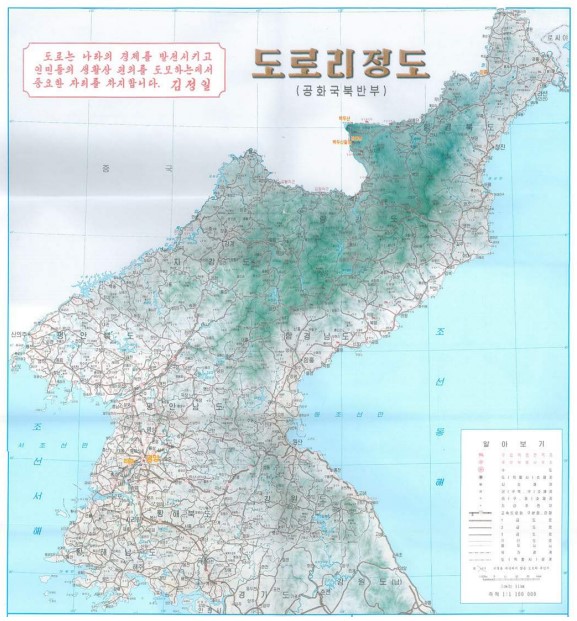
Figure 8. The DPRK's railway map. In theory, rail-mobile launchers could travel on most of the railway lines and start firing preparation upon orders, although it is hard to assess how much of the railway is well maintained. Image: Daily NK [28]
Conclusion
The DPRK may further explore rail-basing of ballistic missiles with the intention of making its rocket force more sizable and diversified. In comparison with more costly alternatives (such as submarinebased launches), and considering potential resource deficiencies in the heavy-duty truck and shipbuilding industries, the rail-basing mode may be considered by the DPRK as a cost-effective proposition.
The DPRK rail-mobile launchers are currently only used for short-range ballistic missiles. However, given the political and geographic context of the Korean Peninsula, such rail-mobile launchers should be considered strategic weapons against ROK and US military installations in the region. In the long run, the DPRK may try to expand the rail-basing mode to accommodate longer range missiles.
Though not infallible, the ballistic rail-mobile launchers will increase the difficulty of a successful first strike on the DPRK and could make a preemptive strike by the DPRK more difficult to deter.
Although the recent missile launch activities of the DPRK and the ROK are likely not deliberately planned to coincide with each other, the danger associated with an arms race on the Korean Peninsula and risks of possible conflict escalation continue to be present, if not increasing.
Attachment
Pak Jong Chon Guides Test Firing Drill of Railway-borne Missile Regiment
Pyongyang, September 16 (KCNA) -- Pak Jong Chon, member of the Presidium of the Political Bureau and secretary of the Central Committee of the Workers' Party of Korea, guided a test firing drill of a railway-borne missile regiment.
Among the spectators were officials of the Department of Political Leadership over Military Affairs and the Department of Munitions Industry of the C.C., WPK, leading officials of the General Staff of the Korean People's Army and the sector of research on national defence science.
The 8th Congress of the Party, as part of the establishment of a new national defence strategy, organized a railway-borne missile regiment to increase the capability of dealing an intensive multi-concurrent blow at the forces posing threats to us at a time of conducting necessary military operations and to markedly improve the capability for more positively coping with various sorts of threats.
The test firing drill took place for the purpose of confirming the practicality of the railway-borne missile system deployed for action for the first time, of judging the combat readiness and capability of performing firepower duty of the newly-organized regiment all of a sudden and of attaining proficiency in the action procedures in case of fighting an actual war.
The railway-borne missile regiment took part in the drill with a mission to strike the target area 800 kilometers away from its location after moving to the central mountainous area at dawn on September 15.
The regiment finished rapid movement and deployment according to the norm of the operation and action procedures of the railway-borne missile system, and accurately struck the target in the East Sea of Korea according to the firepower mission.
Pak Jong Chon appreciated that the test firing drill of the regiment was successfully conducted in line with the strategic and tactical design and intention of our Party.
Saying that the railway-borne missile system serves as an efficient counter-strike means capable of dealing a harsh multi-concurrent blow to the threat-posing forces through separate performances of firepower duty in different parts of the country, he called upon the army and relevantfield to steadily round off tactical plans for properly applying this system to suit to the geographical conditions and actual situation of our country.
He discussed in detail the matter of making the railway-borne missile regiment acquire the operational experience for actual war and expanding and reorganizing it as a railway-borne missile brigade at an early date in the future.
He said that the deployment of the railway-borne missile system for action in accordance with the line and policies on modernizing the army set forth at the 8th Congress of our Party holds very great significance in increasing the war deterrence of the country. -0-
[1] Some basing mode proposals were quite creative. For example, China allegedly planned to deploy its DF-5 intercontinental ballistic missile on ships that sail on the Yangtze River. See: John Wilson Lewis and Hua Di, China’s Ballistic Missile Programs, International Security, Fall 1992
[2] Minuteman, Association of Air Force Missileers, available at: https://www.afmissileers.org/Minuteman; There are multiple interpretations as to why the rail-basing mode was abandoned. One reason could be that the navy already operates ballistic missile submarines, and the rail-mobile launchers are more expensive than silos. See: Steven Anthony Pomeroy, Echos that never were: American mobile intercontinental ballistic missiles, 1956-1983, Auburn University, available at: https://etd.auburn.edu/xmlui/handle/10415/298
[3] John Wilson Lewis and Hua Di, China's Ballistic Missile Programs, International Security, Fall 1992
[4] NATO designation SS-24
[5] According to Russian literature, a rail-mobile launcher (of the RS-22 missile) is "intended to store and and transport the missile and its technical equipment; maintain the missile on combat alert while in permanent garrison, on combat patrol routes and at halts; prepare and launch the ICBMs at any time of day or night ... . The rail -mobile launcher is a sophisticated railroad carriage-mounted complex, housing the missile and its technological equipment along with special purpose systems, the duty shift of personnel and equipment to control the launcher." See: Russia's Arms Catalog, Volume IV, Strategic Missile Forces, 1996-1997, Moscow: Military Parade
[6] Daniel Arnaudo, Threat Reduction Programs Meet Benchmarks, Arms Control Association, June 2008, available at: https://www.armscontrol.org/act/2008-06/threat-reduction-programs-meet-benchmarks
[7] Steven Anthony Pomeroy, Echos that never were: American mobile intercontinental ballistic missiles, 1956-1983, Auburn University, available at: https://etd.auburn.edu/xmlui/handle/10415/298
[8] 북, 철도용 이동식 미사일발사대 제작 [North Korea is manufacturing railway missile launchers], Radio Free Asia, 30 August 2016, available at: https://www.rfa.org/korean/in_focus/nk_nuclear_talks/missile08302016093639.html
[9] There has been no concrete update on the conversion process since July 2019. See: Tianran Xu, Ballistic Missile Submarines and Submarine-launched Ballistic Missiles of the Democratic People's Republic of Korea, ONN, 16 April 2021, available at: https://opennuclear.org/publication/ballistic-missile-submarines-and-submarine-launched-ballistic-missiles-democratic
[10] The DPRK has developed three missiles with similar flight characteristics: the KN-23, the KN-24 and a larger missile allegedly capable of carrying a 2.5-ton warhead. See: Jaewoo Shin, Veronika Bedenko, Clayton Besaw, Tianran Xu, Katsuhisa Furukawa, ONN Korean Peninsula Risk Assessment, ONN, 1 April 2021, available at: https://opennuclear.org/publication/onn-korean-peninsula-risk-assessment-march-2021
[11] Choi Soo-hyang, (3rd LD) N. Korea says it fired new tactical guided weapon in "warning" against Seoul, Yonhap News Agency, 26 July 2019, available at: https://en.yna.co.kr/view/AEN20190726000853325
[12] Oh Seok-min and Choi Soo-hyang, (3rd LD) N. Korea fires 2 short-range ballistic missiles into East Sea: JCS, 15 September 2021, available at: https://en.yna.co.kr/view/AEN20210915005652325
[13] Oh Seok-min and Choi Soo-hyang, (3rd LD) N. Korea fires 2 short-range ballistic missiles into East Sea: JCS, 15 September 2021, available at: https://en.yna.co.kr/view/AEN20210915005652325
[14] 北朝鮮 弾道ミサイル その後の分析でEEZ内側に落下と推定 [North Korean ballistic missile estimated to landed on Japanese EEZ], NHK, 16 September 2021, available at: https://www3.nhk.or.jp/news/html/20210915/k10013261541000.html
[15] Pak Jong Chon Guides Test Firing Drill of Railway-borne Missile Regiment, KCNA, 16 September 2021
[16] Jaewoo Shin, Veronika Bedenko, Clayton Besaw, Tianran Xu, Katsuhisa Furukawa, ONN Korean Peninsula Risk Assessment, ONN, 1 April 2021, available at: https://opennuclear.org/publication/onn-korean-peninsula-risk-assessment-march-2021
[17] The geolocation of the firing position was first identified by a GEOINT expert who operates under the handle name of "Nathan J Hunt". See, Nathan J Hunt, Twitter, 16 September 2021, available at: https://twitter.com/ISNJH/status/1438308208255193088
[18] 최신 북한 철도 안내도 입수, 대부분 철도 노선 전철화 진행돼 [Received latest information on the DPRK's railway, most railways are electrified], Daily NK, 16 January 2019, available at: https://www.dailynk.com/최신-북한-철도-안내도-입수-대부분-철도-노선-전철화/
[19] 北, 4000㎞ 신형미사일 2곳에 실전배치 [North Korea deploys two new 4,000km missiles], Chosun Ilbo, 4 May 2004, available at: https://www.chosun.com/site/data/html_dir/2004/05/04/2004050470013.html; Steven A. Hildreth, North Korean Ballistic Missile Threats to the United States, The Congressional Research Service, 24 February 2009; Bunker Secrets: HIS Jane's identifies North Korean missile sites, Jane Intelligence Weekly, March 2015
[20] Pak also oversaw the "new type long-range cruise missile" tests on 11-12 September 2021. For the briefing of the cruise missile tests see: Tianran Xu, Briefing on North Korea's 11/12 September Missile Launches, ONN, 14 September 2021, available at: https://opennuclear.org/publication/briefing-north-koreas-1112-september-missile-launches
[21] Pak Jong Chon Guides Test Firing Drill of Railway-borne Missile Regiment, KCNA, 16 September 2021
[22] Since 2014, official DPRK media refers to the service as "Strategic Force". Between 2012 and 2014, it was referred to as "Strategic Rocket Force". See: Hong Min, Enhancement in Nuclear Weapons Development and Its Military, Political and Economic Repercussions in North Korea, Korea Institute for National Unification, p. 4, available at: https://www.kinu.or.kr/pyxis-api/1/digital-files/b7a34768-2ad8-4dd9-b60c-b7fd08bd9062
[23] 북한 미사일 경비병의 폭로 "그 날 열병식에 나왔던 미사일 속엔…" [Revelation by a DPRK missile guard: "Inside the missiles that appeared on the parade that day…"], DongA-Ilbo, 19 April 2013, available at: https://nambukstory.donga.com/Board?cid=&bid=124&#!lid=303612&bid=124&p=71&m=view; Joseph Bermudez, Victor Cha, Lisa Collins, Undeclared North Korea: The Sino-ri Missile Operating Base and Strategic Force Facilities, Beyond Parallel, 21 January 2019, available at: https://beyondparallel.csis.org/undeclarednorth-korea-the-sino-ri-missile-operating-base-and-strategic-force-facilities; The ROK defense ministry estimated that the DPRK operates 13 missile brigades in its 2020 Defense White Paper, roughly corresponding to a total of 100 TELs previously stated by the ROK military if a brigade operates about nine TELs. See: 2020 Defense White Paper, Ministry of National Defense, ROK, 7 February 2021, available at: https://www.mnd.go.kr/user/mnd/upload/pblictn/PBLICTNEBOOK_202106300300426680.pdf; S. Korea's military to greatly increase Hyunmoo missiles, Yonhap News Agency, 14 August 2016, available at: https://en.yna.co.kr/view/AEN20160814001300315
[24] Austin Long and Brendan Rittenhouse Green, Stalking the Secure Second Strike: Intelligence, Counterforce, and Nuclear Strategy, Journal of Strategic Studies, 24 December 2014, available at: https://www.tandfonline.com/doi/pdf/10.1080/01402390.2014.958150
[25] This is an estimate from the ROK military. See: S. Korea's military to greatly increase Hyunmoo missiles, Yonhap News Agency, 14 August 2016, available at: https://en.yna.co.kr/view/AEN20160814001300315
[26] North Korea has one experimental ballistic submarine and is in the process of converting at least one larger submarine into a ballistic missile submarine. See: Tianran Xu, Ballistic Missile Submarines and Submarine launched Ballistic Missiles of the Democratic People's Republic of Korea, ONN, 16 April 2021, available at: https://opennuclear.org/publication/ballistic-missile-submarines-and-submarine-launched-ballistic-missiles-democratic
[27] On Report Made by Supreme Leader Kim Jong Un at Eighth Congress of WPK, KCNA, 1 January 2021
[28] 최신 북한 철도 안내도 입수, 대부분 철도 노선 전철화 진행돼 [Received latest information on the DPRK's railway, most railways are electrified], Daily NK, 16 January 2019, available at: https://www.dailynk.com/최신-북한-철도-안내도-입수-대부분-철도-노선-전철화/